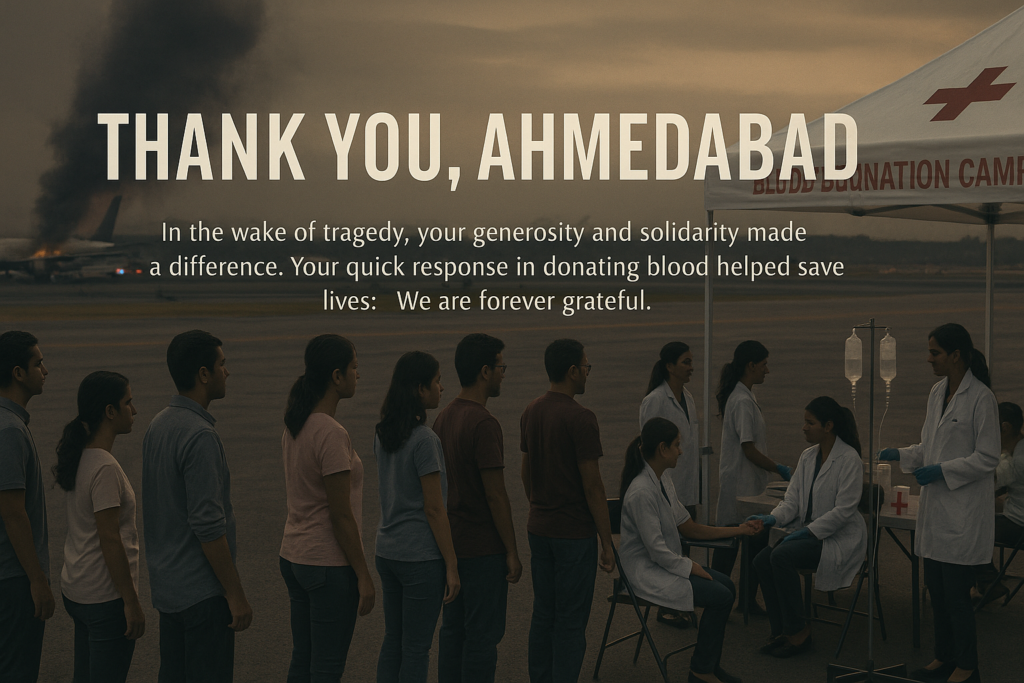In a rare and powerful show of civic unity, hundreds of Ahmedabad residents stepped forward to donate blood within hours of a tragic plane crash on Thursday that left scores injured and hospitals overwhelmed. Over 750 units of blood were collected in a single day—an extraordinary feat made possible by the swift response of ordinary citizens.
Hospitals, including Ahmedabad Civil Hospital, issued urgent calls for O-negative, A-negative, and B-negative blood types as they raced to stabilize critical patients. Within minutes, donation centres saw long queues, as men and women—many of them first-time donors—lined up in silence, moved by a sense of shared duty.
“The response was overwhelming. We’ve never seen something of this scale happen so quickly,” said a senior doctor at Civil Hospital.
Red Cross, NGOs, and Youth Groups Lead the Charge
The Indian Red Cross Society’s blood bank played a pivotal role, supplying 500 units directly to Civil Hospital while simultaneously coordinating mobile units across the city. The remaining 250 units were contributed through pop-up donation camps organised by local NGOs, youth collectives, and educational institutions.
From Navrangpura to Maninagar, schools turned their assembly halls into blood collection centers. Some even paused lectures to allow students to donate.
“There was no appeal needed—everyone just showed up,” said Meera Joshi, a volunteer with a local welfare group. “It was as if the entire city had one heartbeat.”
Spirit of a City: Beyond Numbers, a Message of Humanity
What unfolded in Ahmedabad wasn’t just a logistical triumph, but an emotional one. The mass turnout reflected a growing culture of grassroots readiness in the face of crisis. Volunteers helped organize crowds, manage refreshments, and direct donors across the city.
“I felt like this was the least I could do,” said Saurabh Shah, 26, donating blood for the first time. “We always think, ‘Someone else will help.’ But today, I had to be that someone.”
Officials confirmed that blood stock levels across key hospitals were restored to safe thresholds by evening, ensuring continued care for crash victims and future emergencies.
A Model of Civil Resilience
This event is not Ahmedabad’s first brush with collective action—during the pandemic and past floods, similar citizen-led efforts helped fill critical gaps in relief infrastructure. But this moment stands out for its urgency and scale.
“This was a decentralized, spontaneous act of unity,” said a municipal official. “It shows what’s possible when a city believes in itself.”


